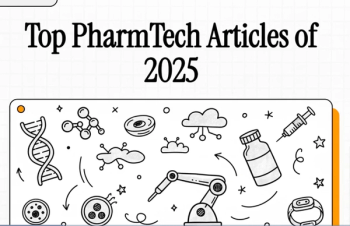
New Risk-Sharing Models Are Needed for Future Vaccine Supply Agreements
Charles River Associates analysts see risk-sharing as the key to improving vaccine availability and access.
The COVID-19 pandemic, and the need to accelerate development and distribution of vaccines, has required companies and governments to take on considerable risk in the hope that vaccines now under development prove to be safe and effective. Currently, Pfizer and BioNTech’s, Moderna’s, and AstraZeneca’s vaccine candidates are in advanced stages, with more than 150 other COVID-19 vaccines in development. Developers are ramping up just-in-time manufacturing and distribution efforts for their candidate vaccines even before they know their relative effectiveness.
As analysts from Charles River Associates (CRA) point out, vaccines developed during other pandemics have shown what can go wrong with traditional supply agreements. During the 2009 H1N1 pandemic, for instance, proactive governments that had arranged early purchase agreements cornered the supply of vaccines, leaving out countries that were slower to act. However, once that pandemic proved to be milder than anticipated, the proactive buyers were left with excess supplies to sell, donate, or dispose of.
In response to COVID-19, the United States government established Operation Warp Speed, which, so far, has coordinated just-in-time distribution of Moderna’s vaccine to begin the minute FDA issues emergency use authorization. In the United Kingdom, the government has entered into supply agreements with individual companies, and launched such an agreement with Moderna on November 17, 2020 (1).
Meanwhile, in the European Union, the European Commission’s (EC) Joint Procurement Agreement (JPA) has been more conservative about entering into supply agreements with individual manufacturers. Only time will show which approach proves the better one.
However, for future vaccine supply arrangements during pandemics, both approaches will ultimately prove inadequate, CRA researchers suggest. Instead, risk-sharing contracts will offer the best opportunity for balancing risks and benefits for developers, governments, and patients. London-based Eva Marchese, PhD, vice-president, and Abhishek
PharmTech: What is the greatest weakness in traditional procurement and distribution agreements for vaccines?
Kumar (CRA): Looking beyond the US from a holistic point of view, we have seen two approaches to procuring vaccines:that of the US and UK, which have been keen to enter into agreements with manufacturers and developers, and have invested in companies and these programs. As a result, they have secured vaccine supply for their populations earlier in the delivery schedule.
On the other hand, the collective approach shown by [countries that signed] the EC’s Joint Procurement Agreement has been more circumspect. They may be engaging with a lot of manufacturers, but have been slow to sign actual supply agreements. This fact may not be too surprising, since the EC is made up of many countries. But, in general, this strategy reflects the fact that government authorities are in a tight spot. If they move quickly to make agreements and commit large sums of money to support the development of specific vaccines, they also have to go back to their citizens to justify that spending. There is always the risk that the agreements they have entered into may not bear fruit.
Neither approach is ideal. In a pandemic situation, you need a better model to assume risk for both buyers and developers. Vaccine manufacturers are making large investments in testing and ramping up production capacities and producing vaccines even before they know with full certainty that the vaccines will work.
Marchese (CRA):It is important to emphasize that, during COVID-19, countries and governments reacted to a situation for which they were not prepared. Handling and managing procurement must be done by respecting differing regulations, and it takes negotiation and time to change those regulations.
Given the lack of time available, governments had to react, and their approach is still reactive. In the UK and the US, political and economic pressures have also been in play. The UK, for example, was in the middle of Brexit negotiations when COVID-19 hit.
PharmTech: Are there any examples of how these risk-sharing agreements would work, and are there any precedents from areas outside of vaccines? What types of “go/no go” gates should be in place to trigger key decisions?
Marchese (CRA): This type of agreement is being seen in oncology and innovative therapies (e.g., cell and gene therapies). The challenge in adapting such models for COVID-19 vaccines is the fact that the vaccine development timeframes are so short and steps have had to be vastly compressed. It isn’t possible to have a full and clear understanding of the vaccines’ clinical effects because data available will be limited. As a result, agreements would need to link the risk to specific efficacy outcomes that will be learned once the vaccines are on the market.They would have to be linked to real-world evidence since, at the time of launch, the full standard package of clinical data won’t be available.
Kumar (CRA): A good idea to consider would be staggered payments triggered by specific milestones (e.g., linking a portion of payment to post-approval, post-launch, and real-world data).Payments could also be linked to approvals at different time points (e.g., getting Emergency Use Authorization or conditional approval and even to positive Phase III data).
Marchese (CRA): Such agreements would be possible once vaccines are commercialized and are being evaluated using more standard approaches.Different models from oncology could also be considered (e.g., linking payments to the effectiveness of the drugs).Using this approach, patients are divided into responding vs. nonresponding groups.Some countries have built registries to track both groups and have linked results to payments to pharma companies.
Gene therapies are also using innovative approaches since they are believed to be curative, but lack the five or six years of follow-up data that are typically found with traditional therapies.
In some cases, even the promise of an individual cure has been linked to payments.For COVID-19 vaccines, the main considerations are how long the vaccine will work and how long the immune response to the vaccine will last. Payment could be linked to these properties, particularly if vaccines on the market differ in their performance in each of these criteria.
PharmTech: Do you see industry fully embracing the risk-sharing concept in payments? How could such a model be possible in planning for future pandemics and other emergencies?
Kumar (CRA): In the COVID-19 pandemic, we have seen non-government organizations, such as the Coalition for Epidemic Preparedness Innovation and the Wellcome Trust, come together with a coordinated response to get vaccines approved as soon as possible. These stakeholders will be key to driving better preparedness for future pandemics. We expect stakeholders to learn from the COVID-19 pandemic experience, and to see more flexibility from both pharma companies and governments and more willingness to engage in innovative approaches to sourcing and supply.
We are already seeing this for innovative breakthroughs such as cell and gene therapies. But we haven’t seen it yet for preventive treatments. However, as companies and governments leverage lessons from the current pandemic, we can expect to see more acceptance.
With vaccines, pharma companies could also be open to pricing vaccines more affordably earlier in the cycle, when there is a need to immunize a large portion of the population. In return, the governments could agree to make longer-term purchasing commitments with those manufacturers who have reduced prices.
With risk-based approaches, a major challenge is monitoring, given the number of patients who would receive treatment. With gene therapy, the number of patients involved is very limited, so results would be relatively easy to monitor. Vaccines present a completely different story, however. An infrastructure will be needed to monitor the number of diverse patients that will be vaccinated. How it takes shape will depend on the specific situation within each specific country.
Reference
Moderna, “Moderna Announces Supply Agreement with the UK,” Press Release, November 17, 2020.
Newsletter
Get the essential updates shaping the future of pharma manufacturing and compliance—subscribe today to Pharmaceutical Technology and never miss a breakthrough.




